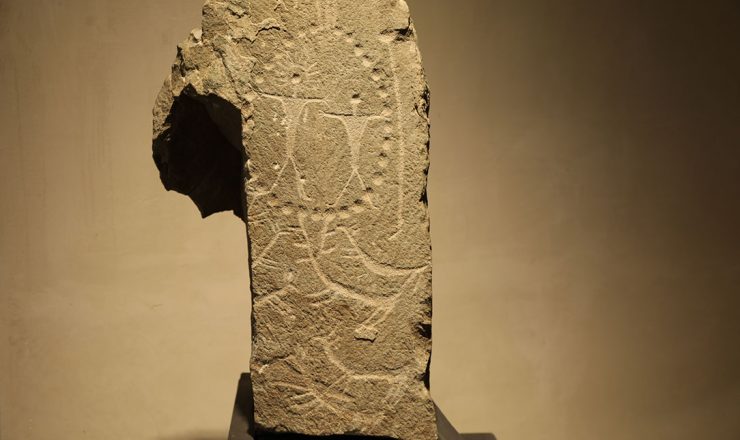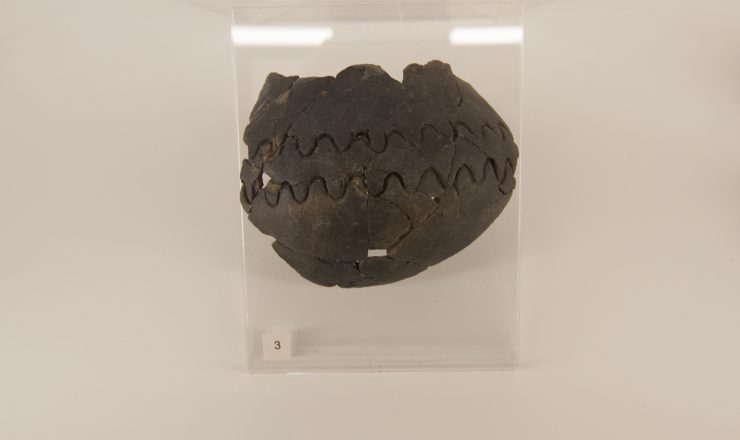MUPRE – Museo Nazionale della Preistoria della Valle Camonica
Capo di Ponte
The Museum
The Museo Nazionale della Preistoria (National Prehistory Museum), housed in the 16th-century Villa Agostani, features exhibits of archaeological finds that integrate with the heritage of rock carvings in the nearby archaeological areas, to provide a comprehensive expression of the identity of the Valle Camonica.
The History

MUPRE - Veduta degli interni
The Valle Camonica is world famous for its extraordinary rock carvings heritage. Over the last 30 years, numerous operations of preventive and research archaeology carried out in the valley allowed to reconstruct the salient elements of the people who inhabited it, known from the Iron Age as the Camunni.
The museum together with the Naquane and Cemmo archaeological parks are part of the first UNESCO World Heritage Site in Italy, designated in 1979.
The Building

MUPRE - L'edificio
Since 2014, the National Prehistory Museum has been housed in a building known as Villa Agostani in the historic centre of Capo di Ponte, once the site of an ecclesiastical seminary and dating back to the 16th century.
In the 18th century, the structure underwent an intervention that unified the pre-existing buildings.
Between 1997 and 2013, restoration and renovation works were carried out by the Ministry of Cultural Heritage (MiBACT), in collaboration with the CARIPLO Foundation. The museum is situated in a strategic point, conveniently connected with the rock art parks in the area. The MUPRE thus became a centre of reference that prepares and provides orientation to those who visit the various prehistoric archaeological sites of the valley.
The Collection
The museum itinerary, divided into seven sections, illustrates the civilisations that settled in the Valle Camonica in the prehistoric and protohistoric eras.
Arranged on two floors, the collection includes objects from sanctuaries and burial sites, as well as objects of domestic use and finds related to mining or metallurgical activities.
Inside the museum, five touchscreens provide in-depth information on the exhibits and allow visitors to personalise their museum visit. A free brochure is also available in Italian and English, illustrating the Museum and the National Archaeological Parks run by the MiBACT.
-

Cemmo 4 Stele
On the main face of the stele, two carved human figures can be attributed, based on the type of dagger, to the final phase of the Copper Age. The taller figure has a sun halo, while the smaller one wears a cup at the level of the pubis, characteristics that distinguish the two figures as a couple.
-

Cevo - Dos Curù Foppelle Alte
This 1999 find features an inscription in the Camunic alphabet on stone. Along with other finds present on stones, boulders, and pottery fragments, it demonstrates that Camunic writing derived from the Etruscan alphabet, though with some adaptations and additions.
-

Bagnolo 2 Stele
The boulder, discovered in 1972, presents a number of unique decorative elements: a sun carved on the upper part, along with the weapons and the animals present on the side, evoke masculine symbols; the collar with pendant situated in the central part, on the other hand, is an element associated with the feminine sphere. For this reason, the stele is configured as “mixed” and was perhaps carved at two different times during the same Remedellian phase (2900-2500 B.C.).
-

Pottery from the Neolithic age
Standing out among the ceramic materials of the Neolithic Age (late 5th – early 6th millennium B.C.) found in excavations conducted on the Breno hill are several bowls made of a very fine clay mixture, with shiny black surfaces, punch decorated with geometric motifs. Due to the particular characteristics of this type of pottery, it was designated “Breno nera” (Breno Black).
-

Double spiral pendant and necklace from Ossimo-Pat
A six-string necklace made of rings of stone and copper, and a double spiral pendant were found in the megalithic sanctuary of Ossimo-Pat. These finds are similar to those depicted on the monuments erected here (such as Pat 1 and 2) and on others of the same period in different sites of the Valle Camonica (Bagnolo 2 boulder).
-

Necropolis of Breno - Val Morina (5th-6th c. B.C.)
The Breno site, along with Borno and Cividate, have provided various funerary objects of the Roman period pertaining to burials or cremation. The section dedicated to the necropolises and the funeral rituals includes objects from the tombs of Cividate Camuno, Breno, and Borno, as well as inscriptions, altars, and funerary monuments.
Address
Via San Martino, 7
25044 Capo di Ponte
Ownership
Ente MiC
Tipology
No profit/donation museum, gallery